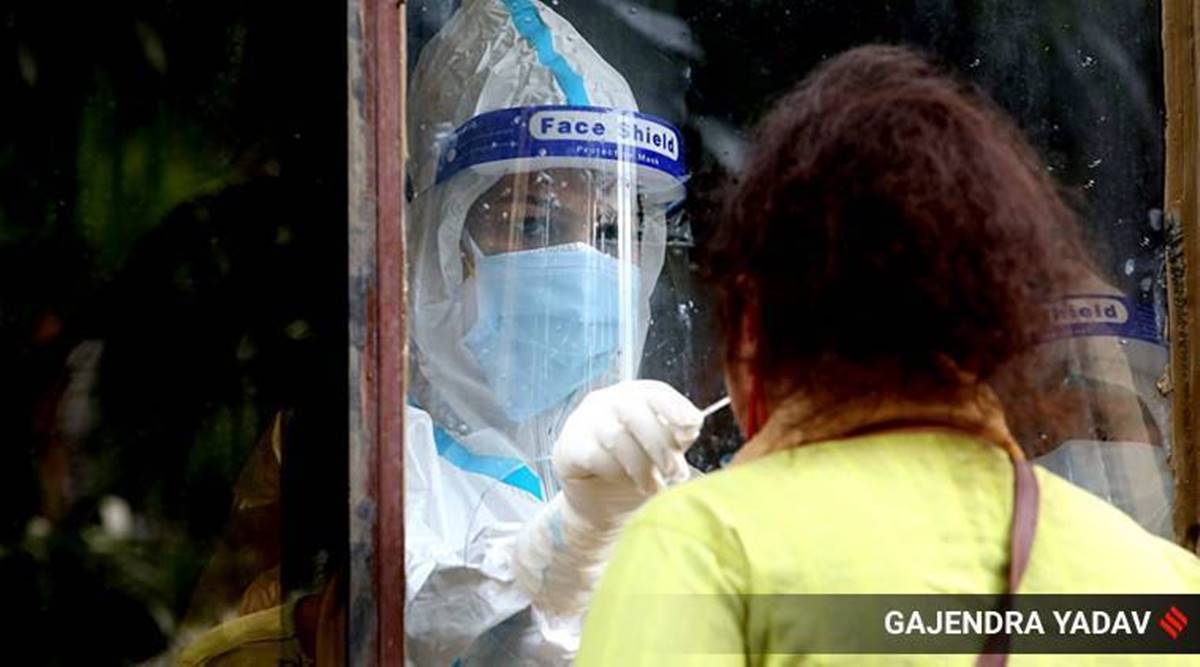Scientists have found this variant to be much more transmissible than other variants in the national capital, the study shows. This is the first time that a surge in any region has been directly linked to the circulation of a particular variant of the virus.
THE MASSIVE surge in coronavirus infections in Delhi in April was caused by the rapid spread of B.1.617.2, a sub-lineage of the variant first found in Maharashtra last year and recently named Delta, according to a new study.
Scientists have found this variant to be much more transmissible than other variants in the national capital, the study shows. This is the first time that a surge in any region has been directly linked to the circulation of a particular variant of the virus.
In the study, scientists from the National Centre for Disease Control (NCDC) and Delhi-based Institute of Genomics and Integrative Biology (IGIB) assessed the Delta variant to be at least 50 per cent more transmissible than the Alpha variant, which was first seen in the UK and was predominant in the region in February and March.
By April, the study shows, the Delta variant had replaced Alpha as the most common variant in Delhi’s population, and accounted for nearly half of all the new infections. “Detection of B1.1.7 (Alpha variant) was minimal (in Delhi population) till January 2021, increasing to about 20 per cent in February and 40 per cent in March,” the study said.
“(The presence of) B.1.617 lineages (Delta is a sub-lineage) increased from below five per cent in February 2021 to about 10 per cent in March before overtaking B.1.17 in April and rising to about 60 per cent of all samples. The sub-lineage B.1.617.2 (Delta variant)…showed the maximum rise going from less than 10 per cent of B.1.617 (parent lineage) to about 80 per cent,” it said.
The study also said that while the Delta variant had higher transmissibility and carried greater viral load, it seemed to cause a lesser number of deaths.
“Our data indicates B.1.617.2 (Delta) shows high transmissibility and surges without any increase in the CFR (Case fatality Ratio, or the death rate). We estimate the transmissibility to be as much as 50 per cent greater than B.1.1.7. Viral load of B.1.617.2 appears to be higher than B.1.1.7, and based on the data from India and UK, so does vaccination breakthrough rate,” it said.
The study said that the Delta variant’s impact on mortality needed to be re-examined, and that the CFR in Delhi was “significantly reduced” during the surge period.
“This may be due to the sudden decrease of B.1.1.7 (Alpha) in the Delhi region which reportedly causes high CFR. The CFR was rising again towards the end of the period (May). Since CFR may be due to an amalgamation of multiple factors, including short-term collapse of the healthcare system, there is currently no evidence linking B.1.617.2 to change in CFR,” it said.
Sujit Singh, head of NCDC and one of the authors of the study, told The Indian Express that several characteristics of the Delta variant were still under investigation. “We are studying the role of the Delta variant in breakthrough infections, or infections post vaccination, and will submit a report soon,” he said.
The B.1.617 lineage, first discovered in October last year in Maharashtra, is believed to be the main trigger for the second wave of infections in the country. Subsequently, three sub-lineages of this variant were detected, of which B.1.617.2 — the others are B.1.617.1 and B.1.617.3 — has been found to be the most dominant. A few days ago, this variant was named Delta by the World Health Organisation (WHO).
The Indian Express had earlier reported that several scientists have acknowledged that a greater surveillance on the circulation of B.1.617 lineage during December and January could have warned the country of the impending second wave.
Source: Read Full Article


